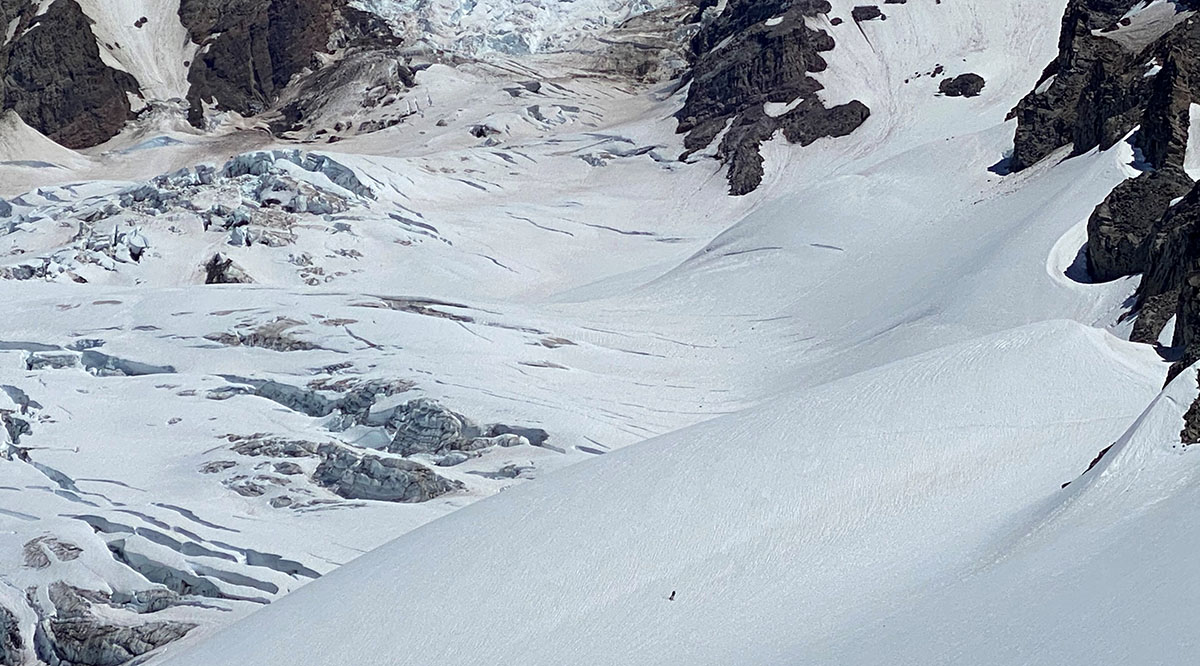
Saadia Akhtar’s spirit still sinks when she recalls watching an elderly man slip away on an emergency room (ER) stretcher while his son sat in a chair holding his father’s hand. The moment from early in the COVID-19 pandemic prompted tears even in the veteran ER doctor at Mount Sinai Beth Israel in New York City.
The man had arrived hours before, so ravaged by the disease that he was soon intubated, and his family decided that he should not be resuscitated if his heart failed. The son donned personal protective equipment and joined the face-shielded Akhtar, MD, and a nurse beside the stretcher. He patched in his mother and sister to say goodbye through a cell phone screen. Akhtar held the son’s hand as his father died.
How does a doctor cope with such experiences and keep going? The COVID-19 pandemic has put front-line hospital staff through unprecedented emotional and physical stress — from the unrelenting wave of critical illness, the fear of catching the novel coronavirus, and flat-out fatigue from shifts that seem to last for days.
Akhtar found solace by practicing her faith, even with her mosque closed. Kelly Casler, DNP, learned a new musical instrument. Stefanie Krick, MD, ran — including a 10-kilometer race in her house. Nutritionist Amy Locke, MD, discovered new meals through recipe experiments. Andrew Ibrahim, MD, discovered new treasures in his neighborhood through long walks.
They and others shared stories of how they’ve decompressed during the pandemic.
Exercise and Nutrition
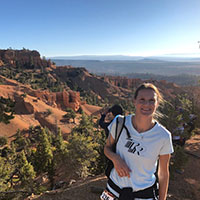
Stefanie Krick, MD
Assistant professor of pulmonary and critical care medicine
University of Alabama School of Medicine
I try to exercise at least five days a week, to carve out that time even if it’s late in the evening or early in the morning. That has kept me sane. I do long runs on weekends by myself, 10 to 18 miles, and shorter runs during the week when time allows. I have one friend I sometimes run with, and we run at least six feet apart.
I belong to a running club and an associated gym. With the pandemic, I’ve participated in some virtual races. One was called “Stay Home”: running 10K [6.2 miles] in your house. I ran through the kitchen, living room, and bedroom. It took about an hour. My kids think I’m insane.
Because the studio is closed, they hold our fitness classes by Zoom in the morning from 5:30 to 6:30. I changed one room in our house into a workout room and bought small weights. The Zoom classes are my absolute favorites, because I can still work out with friends but sleep later before joining the class. During these times, I really don’t want to go back to the studio.
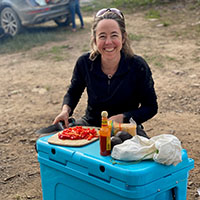
Amy Locke, MD
Co-director, Resiliency Center
University of Utah Health
I am really interested in nutrition. I teach a culinary medicine class — teaching nutrition alongside the skills of preparing food. I’m proficient in the kitchen, so I committed myself to trying a recipe I’ve never made at least once per week.
I have an obscene number of cookbooks — more than anyone should own. I’ve had this weekly routine for years: I flip through a stack of cookbooks and plan five or six meals for the week, and I make a grocery list. There are a lot of different techniques for cooking, but you get stuck. So I’ve been getting more creative.
I’ve started working through recipes where I had said, “Ugh, I don’t think so.” Like cauliflower tacos. I tried a fish cake taco recipe that has this mango/pepper/onion topping that is phenomenal. I didn’t do the fish cakes again, but I started using the topping in all sorts of different places. It’s nice to pick something up at random.
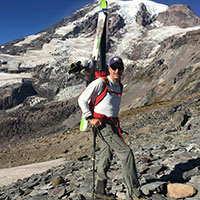
Andrew Luks, MD
Professor of pulmonary, critical care, and sleep medicine
University of Washington School of Medicine
I try to get out to the mountains once a week. In the summer, I hike and climb, and in the winter, I really enjoy backcountry skiing. It’s probably my favorite thing to do in my spare time. It’s the thing that keeps me sane.
At some point in March, Mount Rainier National Park closed, and they closed the national forest land in this area as well. That was a tough period. I used to go to the gym regularly, but they’re closed — and even if they opened, I don’t feel comfortable going. I have an indoor trainer for my bike at home and a rowing machine, and I’ve been using those pretty religiously. I still bike-commute to and from work, about 25 minutes each way.
The national park and national forest lands reopened. The physical activity, the outdoors, the beautiful scenery, being away from other people — it’s a really good way to clear your head. Once you’re out there, there’s no issue with physical distancing. One day, we were up on a glacier and there was no one within a mile of us in any direction.
Faith
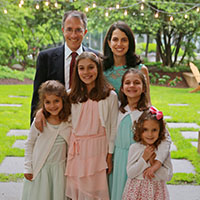
Jose Florez, MD, PhD
Chief, endocrine division and diabetes unit
Massachusetts General Hospital
I’m a person of faith. During the time of the first surge, all of our churches were closed. So the routine for my wife and four daughters on Sunday mornings, instead going to the parish church, was going onto a website where the Diocese of Toronto broadcasts a daily Mass. They have a block of TV programming — it’s always 29 minutes. They have to keep it to 29 minutes, so the girls like that.
We get into decent clothes — no pajamas. We all watch on the same computer. We stand, sit, and kneel during all the different parts of the Mass. They even say a special prayer at the time of communion, even though you can’t receive communion. We sing when it’s time to sing.
It is an anchor for all of us. We were not going to let this virus keep us from something that’s so important to us.
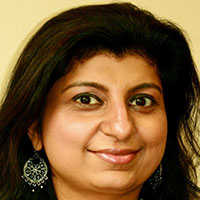
Saadia Akhtar, MD
Associate dean for trainee well-being and resilience in graduate medical education; associate professor, emergency medicine and medical education
Icahn School of Medicine at Mount Sinai
What has kept me sane during this crisis is my faith. I’m a Muslim, and it was Ramadan for us in April and May. Usually during Ramadan, we go to the mosque at night for congregational prayers. The mosques were closed because of the virus. That really was a huge challenge for us. The mosque is the place where we build community. You feel a sense of God’s presence.
My coping mechanism was to continue the practice of fasting, as I do every year. I know that my religion allows people not to fast in certain circumstances. But I fasted, even during my shifts in the ER. I chose that as my way of dealing with the crisis and staying close to God. My religion anchors me.
Arts
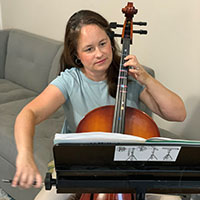
Kelly Casler, DNP
Assistant professor of clinical nursing; family nurse practitioner
Ohio State University College of Nursing
Aside from teaching at the university and working at a community health center, my 5-year-old and 8-year-old children have been home most of the time. My husband is in the military and away a lot. I’ve had to find ways to fill up my “gas tank” so I can keep up with the needs of my family, students, and patients.
Part of my wellness routine has been playing music. I play a little piano and know how to read music. Before COVID, I played the flute and bells in a local group and I had taken a couple of cello lessons. So, most days I’ve been practicing the cello at home.
I try to send the kids into the backyard so I can play. You know kids, they come back in, but I can talk to people while playing. Usually I’m able to compartmentalize and escape with music even if they’re in the room.
The Great Outdoors
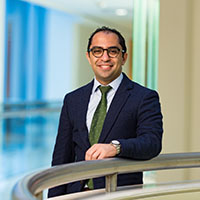
Andrew Ibrahim, MD
Assistant professor of surgery, architecture, and medicine
University of Michigan
During the spring surge, we would work one week and have one week off. If you said, “Andrew, you have one week with no work,” I’d probably fly to a national park to hike. I’m a national park junkie; I have a mission to hike every national park.
I wasn’t going to travel during the outbreak. The alternative was, “Where can I go locally?” I put on my waterproof hiking shoes and walked around my neighborhood.
I was so surprised and a little embarrassed to find how many parks and trails there were within five or 10 minutes from the home that I’ve lived in for more than five years, but I’ve never been to them. It was an empowering process of discovery to understand your own community and surroundings in a more meaningful way.
I took photos. I studied the trails and the way they were created. My background is in architecture and urban planning. I thought a lot about things like, “How did they get the water to drain down this hill?” You look up the hillside and see a handful of strategically placed rocks diverting water in a specific way. You see plants that are deliberately chosen to soak up water. You say, “This trail was put together extremely thoughtfully.”
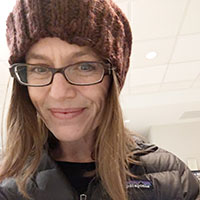
Molly Blackley Jackson, MD
Assistant dean for the colleges; associate professor of medicine
University of Washington School of Medicine
A habit I formed for survival is to exit the hospital every day at lunch. Usually I work through lunch, packing some food to eat on the go, but I forced myself to get out of here, rain or shine, and walk around the Montlake Cut, which is this beautiful waterway just outside the hospital — to breathe and look at the sky.
Things are just so tense everywhere. It’s a survival strategy I need to slow down my heart rate. It’s about 20 minutes — enough to keep me centered.
I do that by myself but also do it on occasion with colleagues who are going through the same thing. We can just listen to each other and recognize it’s an unusual time and we’re not alone in this.
Also, I downloaded the Down Dog Yoga app, and it is so good. I’d been going to a yoga studio, but many of them are closed because of the virus. Now I practice yoga in the mornings on my back deck. You don’t normally get to do yoga outside! Being outside for yoga, I start my day in a quiet, positive space.
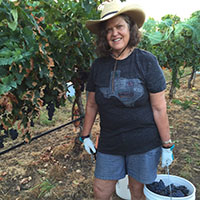
Jan Patterson, MD
Associate dean for quality and lifelong learning; infectious diseases and internal medicine specialist
University of Texas Health Science Center at San Antonio Joe R. and Teresa Lozano Long School of Medicine
My husband and I have a place in the country where we go on most weekends. Ironically, it’s in a town called Comfort, about 45 minutes away. It’s quiet. We have a garden out there. There’s a winery. We like to hike. It really has helped us — just getting out of the city, being in the country and outdoors.
On Sunday mornings I’ll sit outside and read something spiritual. That helps keep me centered, gives me perspective. I attend a virtual Bible class on some Sunday mornings, just to virtually get together with other people to hear some of the spiritual and faith thoughts they share. Sometimes we attend church services virtually. We probably attend now more virtually than we did in person before.
Friends and Family
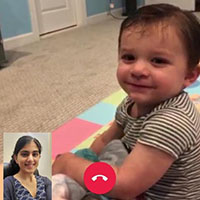
Sheetal Gandotra, MD
Assistant professor of pulmonary and critical care medicine
University of Alabama School of Medicine
My wellness has come from staying connected to my friends and family. We had never done Zoom calls or video catchups. I’ve been doing them with my friends from college and my extended family around the world. My hometown is Toronto, and my husband and I have family in India.
I have a 16-month-old nephew through my husband, and we often do video chats with him. It’s great relaxation. At that age, children can do nothing but make you happy. And they learn new things on a daily basis; I’m in awe of how much he learns.
He’ll wave and blow kisses at me. It’s like Baby TV.
